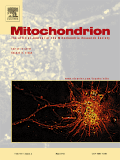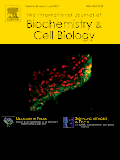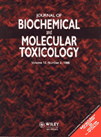
ANTIOXIDANTS & REDOX SIGNALING
Scope & Guideline
Exploring the Intersection of Oxidative Stress and Health
Introduction
Aims and Scopes
- Oxidative Stress Mechanisms:
Research focuses on the biochemical pathways and cellular responses associated with oxidative stress, elucidating how reactive species contribute to cellular damage and signaling. - Redox Biology in Disease:
The journal extensively covers the implications of redox biology in various diseases, including cancer, cardiovascular diseases, neurodegenerative disorders, and metabolic syndromes. - Therapeutic Applications of Antioxidants:
Papers often explore novel therapeutic strategies and interventions using antioxidants and redox-modulating compounds, providing insights into their potential clinical applications. - Mitochondrial Dynamics and Function:
Research highlights the role of mitochondria in redox signaling and oxidative stress, emphasizing their importance in energy metabolism and cellular homeostasis. - Environmental and Chemical Influences:
Studies investigate how environmental factors, such as pollutants and dietary components, affect redox homeostasis and contribute to disease processes. - Innovative Methodologies in Redox Research:
The journal emphasizes advancements in experimental techniques, including imaging and molecular biology methods, to study redox processes in living systems.
Trending and Emerging
- Ferroptosis and Redox Regulation:
Ferroptosis has emerged as a significant area of research, focusing on iron-dependent cell death and its implications in various diseases, particularly cancer and neurodegeneration. - Role of Gasotransmitters in Redox Biology:
There is increased attention on gasotransmitters such as hydrogen sulfide (H2S) and their roles in modulating redox signaling and their therapeutic potentials in various health conditions. - Redox-Metabolic Interplay:
Research is increasingly exploring the intersection of redox biology and metabolic processes, particularly in the context of obesity, diabetes, and cardiovascular health. - Nanomedicine and Antioxidant Therapies:
Innovations in nanotechnology are being applied to antioxidant therapies, with studies focusing on targeted delivery systems to enhance the efficacy of redox-modulating treatments. - Environmental Impact on Redox Homeostasis:
Emerging themes include the effects of environmental stressors, such as pollution and dietary factors, on redox balance and their implications for public health. - Clinical Applications of Redox Modulation:
There is a growing trend towards investigating the clinical applications of redox modulation in therapeutic strategies, particularly in chronic diseases and aging.
Declining or Waning
- Basic Mechanisms of Antioxidant Action:
There has been a noticeable decrease in studies solely focused on the basic mechanisms of how antioxidants work, as research increasingly emphasizes clinical applications and translational research. - Single Antioxidant Studies:
Research focusing on the effects of single antioxidant compounds has waned, with a shift towards more complex studies involving combinations of antioxidants or holistic approaches addressing multiple pathways. - Historical Perspectives on Redox Biology:
Papers that provide historical overviews of redox biology are less frequent, as the field moves towards innovative and cutting-edge research rather than retrospective analyses.
Similar Journals

JOURNAL OF BIOENERGETICS AND BIOMEMBRANES
Illuminating the Pathways of Cellular EnergyJOURNAL OF BIOENERGETICS AND BIOMEMBRANES, published by SPRINGER/PLENUM PUBLISHERS, is a leading journal dedicated to the study of bioenergetics and biomembranes, covering essential topics such as cellular energy transformation and membrane dynamics. Since its inception in 1976, the journal has developed a robust reputation within the scientific community, currently holding a Q3 ranking in Cell Biology and a Q2 ranking in Physiology for 2023. Boasting a prestigious Scopus Rank in both Biochemistry and Physiology, it serves as a crucial platform for disseminating pioneering research findings. With its commitment to quality and innovation, the journal plays a significant role in advancing our understanding of the fundamental processes that underlie life at the cellular level. Although it does not offer open access options, the journal remains accessible through universities and research institutions, ensuring that vital research is widely shared among scholars, professionals, and students alike. The JOURNAL OF BIOENERGETICS AND BIOMEMBRANES is essential for anyone seeking to contribute to or stay informed about developments in this dynamic field.

CELLULAR PHYSIOLOGY AND BIOCHEMISTRY
Connecting Researchers through Open Access ScholarshipCellular Physiology and Biochemistry is a premier Open Access journal published by the prestigious Cell Physiol Biochem Press GmbH & Co, dedicated to advancing research in the fields of physiology, biochemistry, and molecular biology. Since its inception in 1987 and transitioning to an Open Access model in 2013, the journal has established itself as a vital resource for the dissemination of high-quality research and reviews, showcasing innovative methodologies and groundbreaking findings in cellular processes. With an impressive ranking in the 2023 Scopus category as Q2 in Physiology and a robust percentile of 61, Cellular Physiology and Biochemistry is committed to fostering academic dialogue among researchers, professionals, and students alike. This journal not only provides unrestricted access to its articles, but also promotes the global sharing of knowledge, which is essential for the advancement of our understanding in these vital scientific areas. The journal's editorial team is dedicated to ensuring the highest standards of academic rigor and relevance, making it an indispensable addition to the libraries of those engaged in the life sciences.

INTERNATIONAL JOURNAL OF EXPERIMENTAL PATHOLOGY
Exploring the Frontiers of Pathological ResearchINTERNATIONAL JOURNAL OF EXPERIMENTAL PATHOLOGY, published by Wiley, is a leading peer-reviewed journal dedicated to the field of experimental pathology. With an ISSN of 0959-9673 and E-ISSN 1365-2613, the journal has been a vital resource for researchers and professionals since its inception in 1990, covering a broad spectrum of topics within pathology, cell biology, and molecular biology. The journal's relevancy is underscored by its Q2 ranking in Pathology and Forensic Medicine and Q3 rankings in both Cell Biology and Molecular Biology, as of 2023, reflecting its significant contribution to the scientific community. Although it does not currently offer open access options, readers can benefit from its insightful research articles and reviews that guide advancements in diagnostic pathology and therapeutic strategies. As the journal continues to evolve, it remains committed to facilitating the exchange of innovative ideas and findings that drive progress in experimental pathology and related fields, making it an indispensable platform for scientists, clinicians, and students alike.

ARCHIVES OF PHYSIOLOGY AND BIOCHEMISTRY
Exploring the Interplay Between Physiology and BiochemistryArchives of Physiology and Biochemistry, published by Taylor & Francis Ltd, is a renowned journal that has been pivotal in advancing knowledge and research in the fields of physiology and biochemistry since its inception. With an impact factor reflective of its significant contributions, this journal is categorized in Q2 in Medicine (miscellaneous) and Q3 in Physiology, underscoring its relevance and scholarly impact within the scientific community. The journal publishes original research articles, review papers, and innovative methodologies that explore the intricate relationships between physiological functions and biochemical processes. With its commitment to fostering scientific discourse, the Archives of Physiology and Biochemistry serves as an essential resource for researchers, professionals, and students alike, providing insights and evidence that drive forward the frontiers of medical and physiological science. The journal is accessible in both print and online formats, ensuring that critical research reaches a wide audience.

MITOCHONDRION
Pioneering Discoveries in Mitochondrial FunctionMITOCHONDRION is a distinguished peer-reviewed journal published by Elsevier Science Ltd, focusing on the intricate roles of mitochondria in various biological processes. With an ISSN of 1567-7249 and an E-ISSN of 1872-8278, this journal has carved out a significant niche within the fields of Cell Biology, Molecular Biology, and Molecular Medicine, as evidenced by its Q2 ranking in these categories for 2023. The journal emphasizes the latest research on mitochondrial biogenesis, function, and dynamics, making it a pivotal resource for professionals, researchers, and students engaged in cutting-edge mitochondrial studies. With a robust Scopus ranking, placing it in the top percentiles of its categories, MITOCHONDRION not only advances scientific understanding but also fosters collaboration and innovation within the research community. Though it does not offer Open Access, the journal's comprehensive articles and reviews remain indispensable for those striving to unravel the mysteries of mitochondrial biology. For research spanning from its inception in 2001 through its ongoing commitment to 2024, MITOCHONDRION continues to be a vital platform for disseminating high-quality, impactful research in the realm of mitochondrial science.

INTERNATIONAL JOURNAL OF BIOCHEMISTRY & CELL BIOLOGY
Advancing the Frontiers of Biochemistry and Cell BiologyThe International Journal of Biochemistry & Cell Biology, published by Pergamon-Elsevier Science Ltd, stands as a pivotal resource in the fields of biochemistry and cell biology. With an ISSN of 1357-2725 and an E-ISSN of 1878-5875, this prestigious journal has been a key platform for disseminating cutting-edge research since its inception in 1995. The journal currently holds an impressive Q1 ranking in Biochemistry and a Q2 ranking in Cell Biology for the year 2023, reflecting its commitment to high-quality research and its influence within the scientific community. With a significant Scopus ranking of 94/438 in Biochemistry and 96/285 in Cell Biology, the journal plays a crucial role in advancing knowledge and fostering innovative approaches in these dynamic fields. Though it is not an open-access journal, the International Journal of Biochemistry & Cell Biology remains accessible to a wide audience, making it a vital resource for researchers, professionals, and students alike, who are eager to explore and contribute to the ongoing advancements in biochemistry and cell biology.

BIOCHIMICA ET BIOPHYSICA ACTA-MOLECULAR CELL RESEARCH
Illuminating the pathways of cellular innovation.BIOCHIMICA ET BIOPHYSICA ACTA-MOLECULAR CELL RESEARCH is a premier journal published by Elsevier, dedicated to advancing the fields of cell biology and molecular biology. Established in 1982, this influential journal has been at the forefront of scientific research and innovation, currently holding esteemed positions with a Q2 ranking in Cell Biology and a Q1 ranking in Molecular Biology for 2023, reflecting its commitment to high-quality scholarship. With an impressive impact factor, it ranks in the 82nd and 78th percentiles for Molecular Biology and Cell Biology, respectively, amongst its peers. Researchers, professionals, and students will find this journal to be an invaluable resource for exploring the latest discoveries and methodologies in the molecular mechanisms underlying cellular functions. Although it is not an open-access journal, the insights offered in its pages contribute significantly to the scientific community's understanding of cellular and molecular processes, ensuring it remains a vital platform for disseminating cutting-edge research.

Autophagy
Unlocking the Secrets of Cellular RecyclingAutophagy is a premier peer-reviewed journal published by Taylor & Francis, Inc. in the United States, focusing on advances in the fields of Cell Biology and Molecular Biology. With an impressive impact factor reflected in its Q1 ranking in both categories, Autophagy stands as a vital resource for researchers and professionals dedicated to understanding the intricate mechanisms of cellular degradation and recycling. The journal has been a cornerstone of scientific communication since its inception in 2005, continuing to flourish through 2024, fostering collaboration and innovation in the study of autophagic processes. Although it does not currently offer Open Access options, the journal remains highly regarded for its rigorous peer-review process and its commitment to publishing high-quality, impactful research. By bridging fundamental research with clinical applications, Autophagy plays a crucial role in advancing our understanding of various diseases, making it an essential tool for scholars and practitioners in the biomedical field.

Redox Biology
Advancing Knowledge on Reactive Species and Their Impact on HealthRedox Biology, published by Elsevier, stands as a premier open-access journal in the fields of biochemistry, clinical biochemistry, and organic chemistry. Since its inception in 2013, the journal has provided a vibrant platform for researchers to disseminate high-quality findings that advance our understanding of redox biology and its implications in health and disease. With an impressive impact factor and ranked Q1 across multiple chemistry disciplines, Redox Biology is recognized for its significant contributions to the scientific community, drawing attention from a global audience. This journal aims to foster a rich dialogue among scientists, clinicians, and students, emphasizing the critical role of redox processes in biological systems. Located in the Netherlands, Redox Biology has become an essential resource for those seeking to explore the nuanced interactions of reactive species and their roles in cellular function and pathology, making it a must-read for anyone interested in the forefront of biochemistry research.

JOURNAL OF BIOCHEMICAL AND MOLECULAR TOXICOLOGY
Unraveling the Complexities of Molecular ToxicologyJournal of Biochemical and Molecular Toxicology, published by Wiley, plays a pivotal role in the advancement of knowledge within the fields of biochemistry, toxicology, and molecular biology. Established in 1998, this esteemed journal has garnered a significant reputation, evidenced by its current placement in the Q2 quartile across several categories, including Biochemistry, Health, Toxicology and Mutagenesis, and Medicine. With an ISSN of 1095-6670 and an E-ISSN of 1099-0461, it serves an international audience, offering critical insights and innovative research that shape our understanding of biochemical interactions and toxicological assessments. While it does not operate on an open-access model, the journal ensures rigorous peer review and high-quality publication standards, making it a valuable resource for researchers, professionals, and students dedicated to the exploration of molecular toxicology. The journal's recognized impact within the scientific community is reflected in its competitive rankings among specialized journals, fostering significant contributions to both academic and applied contexts.